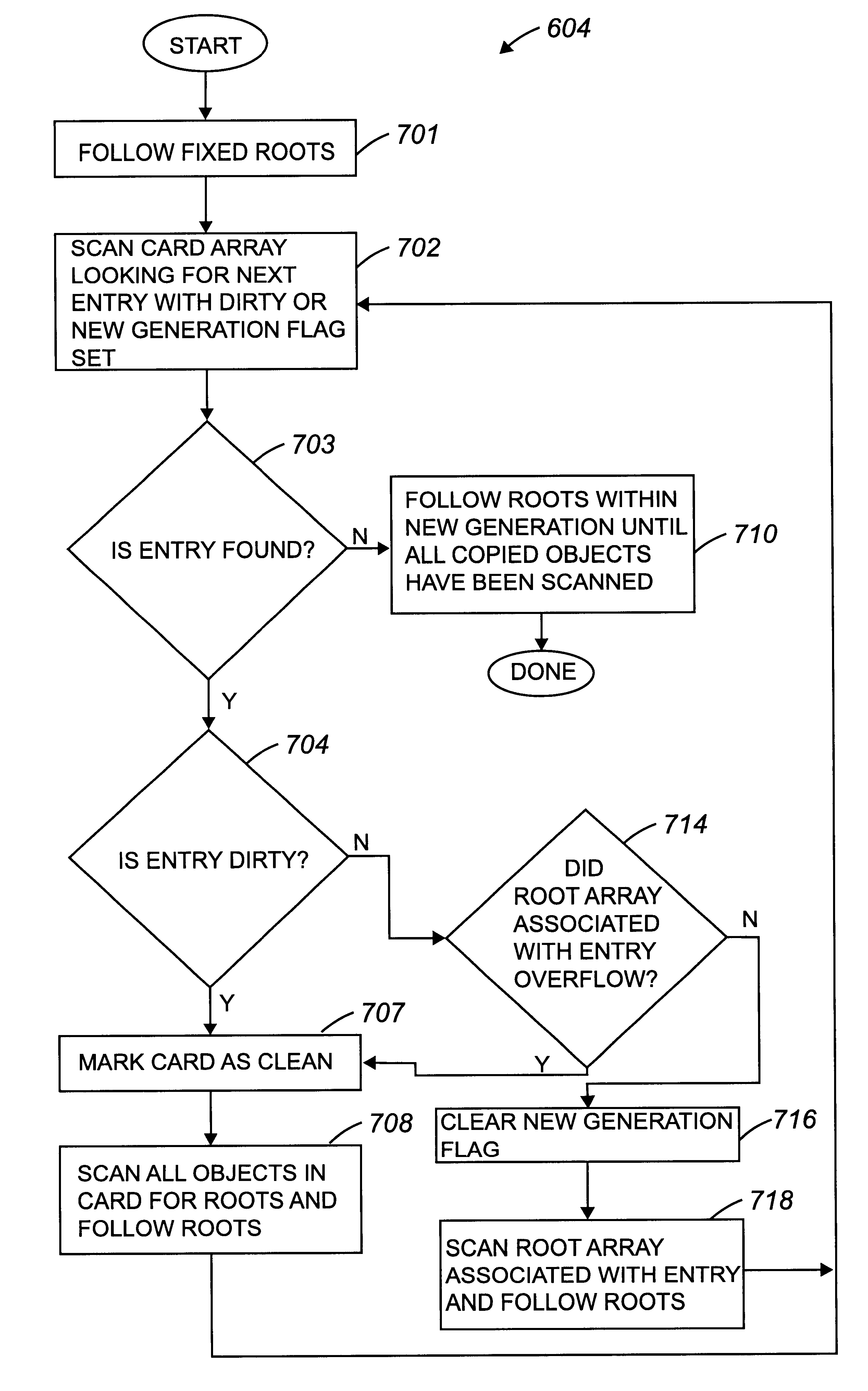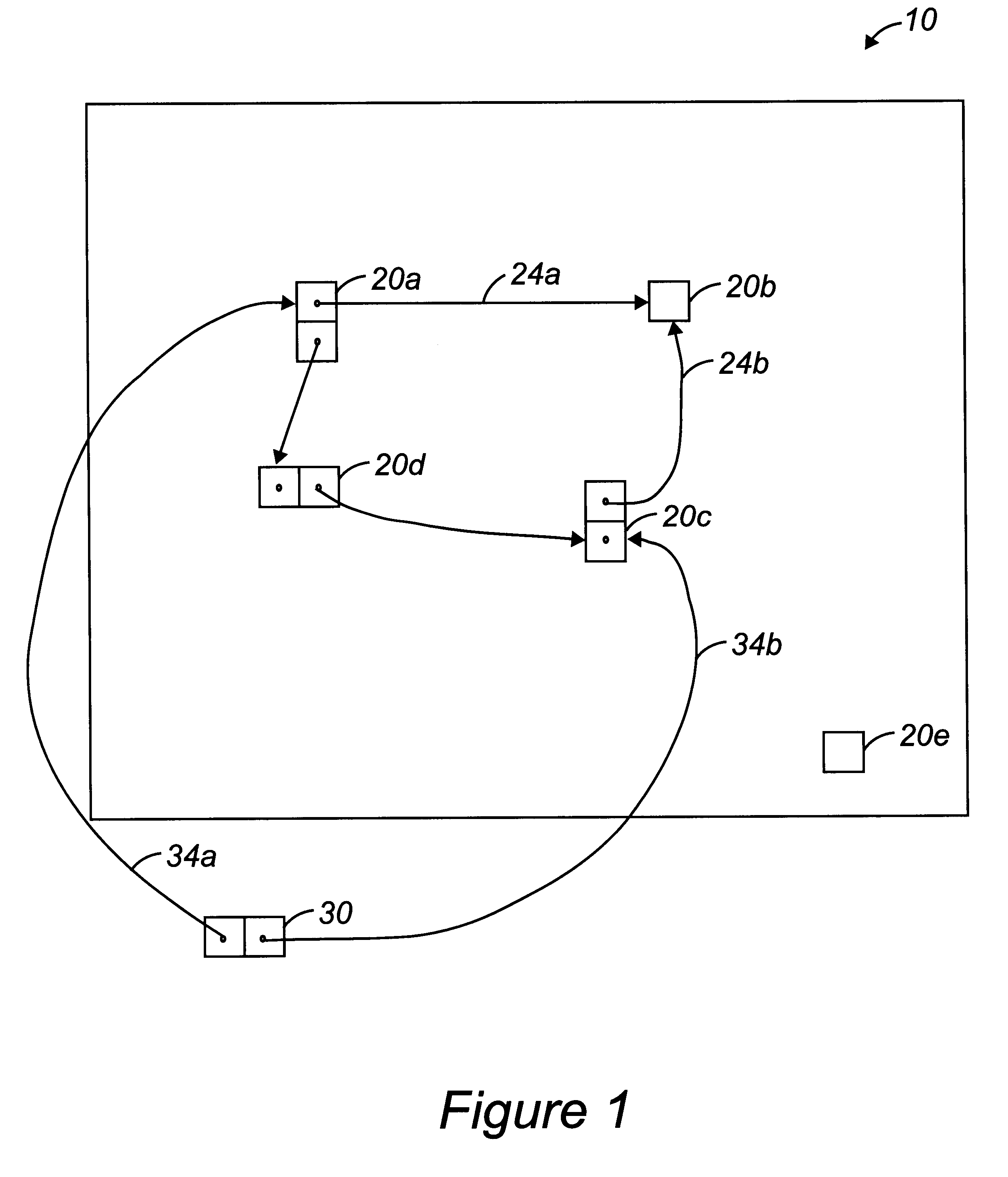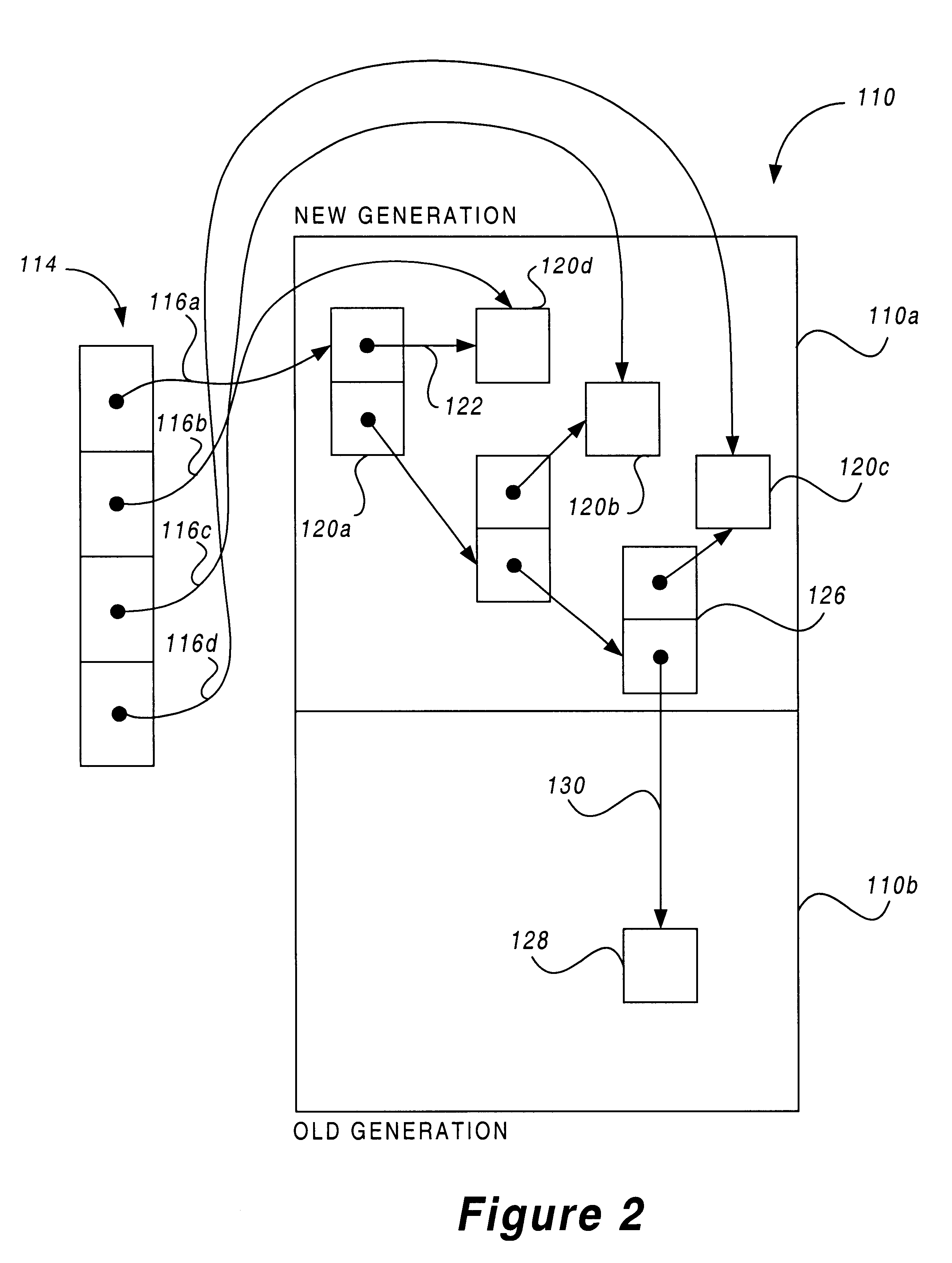Methods and apparatus for generational dynamic management of computer memory
- Summary
- Abstract
- Description
- Claims
- Application Information
AI Technical Summary
Problems solved by technology
Method used
Image
Examples
Embodiment Construction
Garbage collection is used to dynamically allocate computer memory for use by a computer program. In general, garbage collection causes pauses in the execution of the program. One apparatus for reducing the pause-times associated with garbage collection is to divide the memory into a plurality of generations. By way of example, in a two generation memory structure, the memory may be divided into a new generation, which includes newly allocated objects, and an old generation, which includes older objects. It should be appreciated that, newly allocated objects tend to die more quickly than older objects. As such, garbage collection may be performed more often in the new generation than in the old generation. Typically, the new generation is relatively small compared to the overall size of the memory. Accordingly, garbage collection within the new generation may typically be performed without causing substantial interruptions during the execution of a program.
While garbage collection i...
PUM
 Login to View More
Login to View More Abstract
Description
Claims
Application Information
 Login to View More
Login to View More - R&D
- Intellectual Property
- Life Sciences
- Materials
- Tech Scout
- Unparalleled Data Quality
- Higher Quality Content
- 60% Fewer Hallucinations
Browse by: Latest US Patents, China's latest patents, Technical Efficacy Thesaurus, Application Domain, Technology Topic, Popular Technical Reports.
© 2025 PatSnap. All rights reserved.Legal|Privacy policy|Modern Slavery Act Transparency Statement|Sitemap|About US| Contact US: help@patsnap.com



